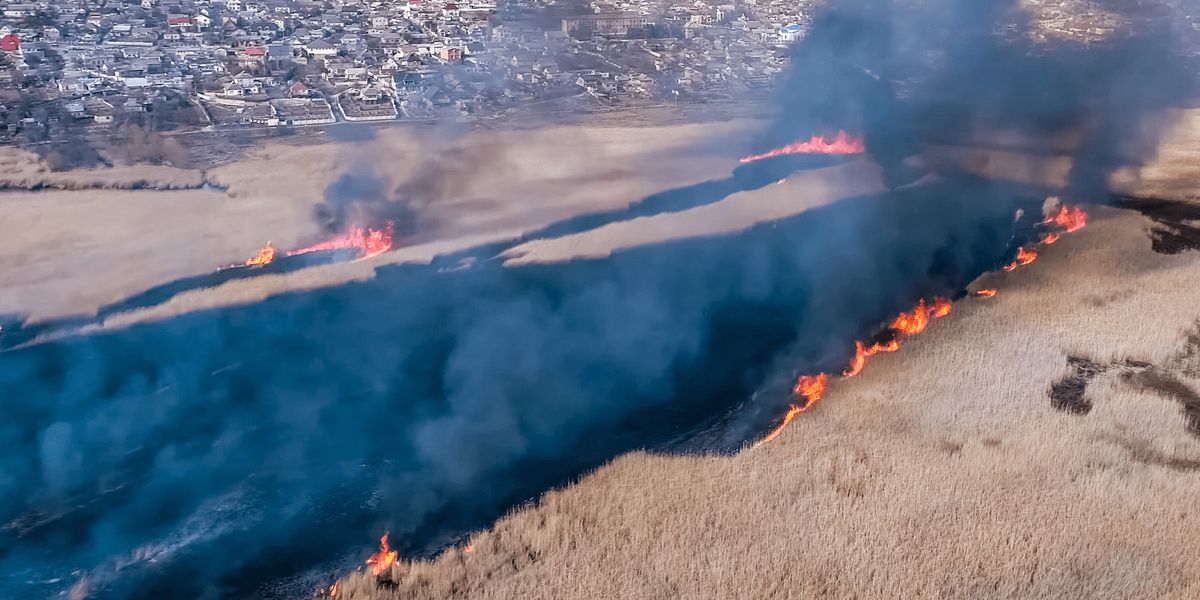
Fire Protection Engineers: Key Players in Solving the Wildland Urban Interface Fire Problem
Learn how a fire protection engineer (FPE) can provide engineering-based solutions to help your community with wildland urban interface (WUI) fire planning and mitigation activities.
Posted: Feb. 24, 2023
- Find similar articles:
- CRR
- Wildfire and WUI
FPEs apply their knowledge of materials, chemistry, social science and fire to reduce the risk of fires and protect communities. One area where their expertise is essential is in WUI areas where homes and other structures are located near wildlands and vegetative fuels.
How FPEs are addressing the WUI fire problem
FPEs play a critical role in the WUI, using their knowledge of fire science and engineering to design structures, plans and systems that help prevent and mitigate the spread of wildfires to make communities more resilient. Possible FPE WUI interactions include:
- Conducting wildfire risk assessments to identify potential hazards and vulnerabilities and developing WUI fire mitigation and management plans to minimize risk and protect communities.
- Designing and incorporating fire protection systems and technology, such as fuel reduction measures, fire breaks, construction materials selection and early warning systems.
- Collaborating with land management agencies, authorities having jurisdiction and first responders to develop and implement fire and emergency management strategies.
- Participating in community outreach and education programs to raise awareness about WUI fire risks and risk reduction strategies.
- Conducting research on the combustion of fuels and the interactions with weather patterns and other environmental conditions that may increase fire risk or exposure to products of combustion.
An FPE’s work might start with several questions intended to understand the nature of wildfire hazards in WUI areas, such as:
- Where are the WUI areas in a community?
- What types of structures and people are in the WUI?
- How fire ready are properties in the WUI (density, building materials, landscaping, etc.)?
- What are the potential ignition sources (human activity, power lines, etc.)?
- What measures could be taken to reduce risk of wildfire and fire spread?
- What is the role of weather in making these fuels more or less combustible?
- How prepared is the community regarding fire mitigation, evacuation and response?
Suggested areas for increased FPE WUI interaction
Following a risk assessment, other areas of WUI focus for FPEs may include:
- Developing a comprehensive Community Wildfire Protection Plan (CWPP) with an interdepartmental approach.
- Raising public awareness about where WUI exists, including nontraditional areas that are in the WUI, and promoting ways to prevent, detect and mitigate fires.
- Identifying gaps in WUI fire preparedness, including fire department capabilities and training, to support safer, more resilient communities.
- Accessing and promoting USFA WUI resources, such as the “Role of the Fire Service in Creating Healthy Community Landscapes” video and National Fire Academy WUI courses.
- Staying up to date on new resources, such as a WUI mapping tool that the USFA is developing, or the WUI Virtual Handbook for Property Fire Risk Assessment and Mitigation that was recently published by the Society of Fire Protection Engineers (SFPE).
WUI learning opportunities
As an FPE, there are opportunities to increase knowledge and community impact, such as attending conferences and workshops, or the SFPE Virtual WUI Summit focused on “What can fire engineering contribute to addressing the problem of fire and related hazards in the WUI?”
Need help with your WUI planning activities?
An FPE brings practical knowledge, tools and methods that can help your community apply proven engineering-based solutions to mitigate WUI challenges. If you are planning a WUI fire risk assessment or need help with other WUI planning activities, such as creating a CWPP, consider consulting with an FPE for comprehensive fire protection.
What is a fire protection engineer?
An FPE is a professional who specializes in the use of scientific and engineering principles to protect people and property from fire and smoke. These engineers are often responsible for the safety features like smoke alarms, fire sprinklers and emergency exits that are present in buildings. However, FPEs also analyze building materials and furnishings to evaluate whether and how they burn. FPEs perform calculations and modeling to understand where smoke and heat might travel to if a fire occurs. This work can require the use of sophisticated tools or knowledge of construction methods to understand how the built environment responds to fire exposure.
Along with structural and mechanical systems, FPE expertise includes:
- Fire dynamics.
- Risk control and management.
- Human behavior during fire events.
- Environmental protection.
- Wildfire management.
FPE responsibilities include the application of science and engineering principles in:
- Designing and assessing fire protection systems, such as fire alarm systems, fire suppression systems, and smoke control and management systems.
- Using knowledge of fire science to develop fire management plans and design fire protection systems for specific situations, such as WUI fire.
- Participating in code development, adoption and enforcement activities.
- Collaborating with architects, builders, planners and other professionals to ensure compliance with local and national fire codes and standards.
- Developing evacuation plans and emergency response procedures.
